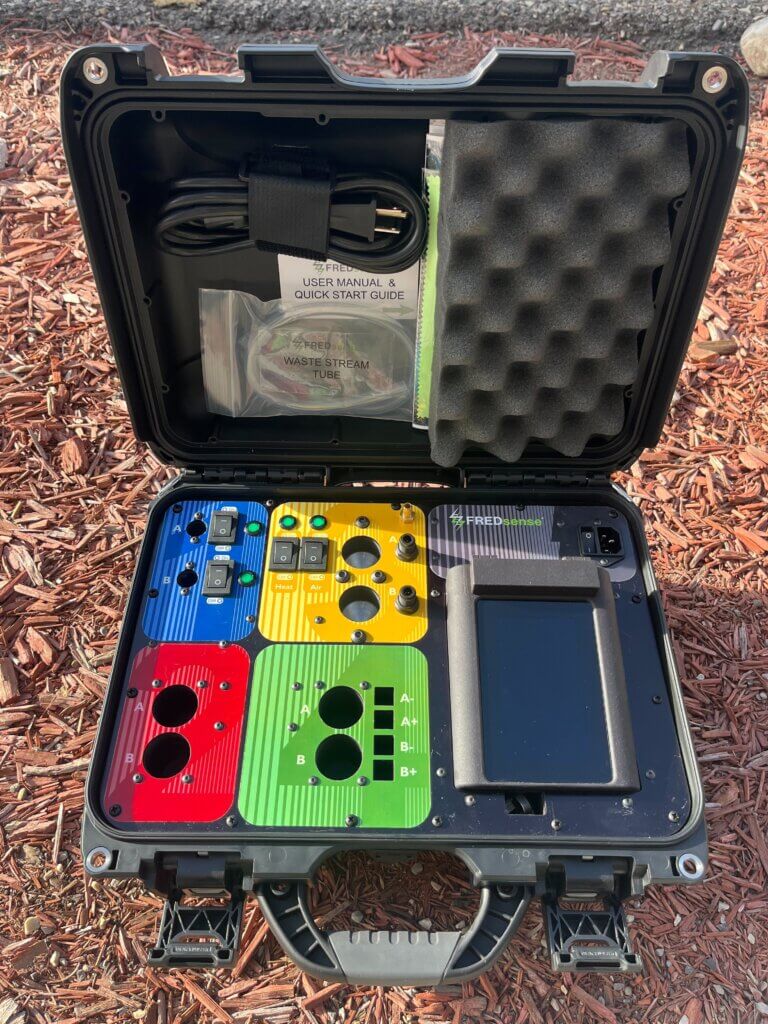You’ve probably heard of “forever chemicals,” but what makes them so enduring? Per- and polyfluoroalkyl substances (PFAS), often called forever chemicals, are a group of synthetic compounds that resist breaking down. This persistence has made them useful in countless products but also a growing concern. Found in water, air, and even food, these chemicals don’t go away, creating environmental and health challenges.
Understanding PFAS and why they’re called forever chemicals is important, especially as scientists, companies like FREDsense, and governments work to address their impact. From their unique chemical structure to their widespread use, PFAS are both a marvel of modern chemistry and a global issue we must confront.
The Mystery Of PFAS Is A Chemistry Tale
PFAS aren’t your average chemicals. They were first developed in the 1940s, prized for their unique ability to repel water, grease, and stains. These qualities made them indispensable in nonstick cookware, water-resistant clothing, and firefighting foams. What makes PFAS so persistent is their incredibly strong carbon-fluorine bond. Unlike most compounds, PFAS resist breaking apart under heat, pressure, or time.

While this durability is what makes them useful, it also means they linger in the environment and the human body. Once introduced, they’re nearly impossible to remove. This mystery of chemistry is both their strength and their Achilles’ heel, leaving us to deal with the consequences of their persistence.
Why “Forever Chemicals” Are Here To Stay
Forever chemicals get their nickname for a good reason—they last indefinitely. They seep into soil, water, and air, slowly building up over time. Unlike other pollutants, they don’t degrade into harmless substances. Instead, they remain in their original form, traveling through ecosystems and even entering our bodies. The persistence of PFAS is compounded by their widespread use.
From industrial processes to consumer products, they’re everywhere. This is why they’re a focus for scientists and regulators. Solving the problem of PFAS contamination is not just about cleaning up what’s already there but also rethinking how we use these chemicals.
The Hidden World Of PFAS In Everyday Products
You might not realize it, but PFAS are all around you. They’re in nonstick pans, waterproof jackets, stain-resistant carpets, and even fast-food wrappers. Their presence is often invisible, making them harder to avoid. This hidden world of PFAS extends beyond consumer goods to industrial applications, where they’re used in processes like metal plating and chemical manufacturing.
Even water supplies have been contaminated by runoff containing these chemicals. The more we look, the more we find. This ubiquity raises questions about how to reduce our reliance on PFAS and whether safer alternatives can be developed without sacrificing their benefits.
PFAS And The Environment Is A Sticky Situation
The environmental impact of PFAS is vast. These chemicals don’t just stay where they’re used. They leach into soil and water, traveling through rivers and oceans. Wildlife exposed to PFAS can accumulate these chemicals in their systems, which in turn affects entire ecosystems. Contaminated water supplies are one of the most pressing issues. Once PFAS enter water sources, they’re extremely difficult to remove.
Cleanup efforts are costly and time-consuming, often requiring advanced technologies. This sticky situation has made PFAS a priority for environmental groups, regulators, and companies like FREDsense, who are developing field-based testing solutions to monitor and address contamination.
The Global PFAS Puzzle, Who Is Taking Action?
Countries worldwide are grappling with the challenge of PFAS. Regulations differ, but the urgency is the same. The United States and European Union are leading the charge with stricter limits on PFAS in water and products. However, gaps remain. While some nations are banning PFAS outright, others are still reliant on these chemicals for industrial and consumer uses.
Collaboration between governments, scientists, and companies is key. Organizations like FREDsense are playing a crucial role, offering cutting-edge PFAS testing tools to help identify and manage contamination in the field. Solving this global puzzle requires both local action and international cooperation.
FREDsense PFAS Testing: A Modern Solution
FREDsense is revolutionizing how we test for PFAS. Traditional methods require samples to be sent to labs, a process that can be slow and expensive. FREDsense offers portable testing equipment that delivers results quickly and accurately in the field.
This innovation makes it easier for environmental consultants, water treatment professionals, and industries to identify contamination early and take action. By simplifying PFAS detection, FREDsense is helping to reduce the impact of these chemicals on our environment and health. Their modern solution is a game-changer in addressing the forever chemicals problem, offering hope for faster and more effective interventions.

How Can You Minimize Your PFAS Exposure?
While PFAS are everywhere, you can take steps to reduce your exposure. Start by being mindful of the products you use. Choose cookware without nonstick coatings, avoid stain-resistant fabrics, and opt for packaging-free or PFAS-free food options. Testing your water for PFAS is another critical step. If contamination is detected, consider filtration systems designed to remove these chemicals.
Supporting companies and initiatives working on PFAS-free alternatives also helps drive change. Every small action contributes to reducing the demand for PFAS and minimizing their presence in our environment. Awareness and proactive choices are your best defenses against these persistent chemicals.
A Glimpse Into The Future: Can We Live PFAS-Free?
The future of PFAS is uncertain but promising. Scientists are actively researching ways to break down these chemicals into harmless components. New materials are being developed to replace PFAS in products, offering similar benefits without the environmental costs. Regulations are also becoming stricter, pushing industries to innovate. However, completely eliminating PFAS will take time.
Cleanup efforts for existing contamination are ongoing, and the transition to PFAS-free alternatives isn’t without challenges. Still, the growing awareness and commitment to addressing this issue give hope. With continued effort, we may one day achieve a world less reliant on forever chemicals.
PFAS, or forever chemicals, are a fascinating and troubling part of modern life. Their durability has made them useful but also a significant environmental and health concern. From their chemical resilience to their widespread use, PFAS present challenges that require innovation and collaboration.
Companies like FREDsense are at the forefront of addressing contamination, offering tools to detect and manage these chemicals effectively. Reducing PFAS exposure starts with awareness and individual action, but solving the broader problem requires global effort. Together, we can work toward a future where forever chemicals no longer define our environment or health.
